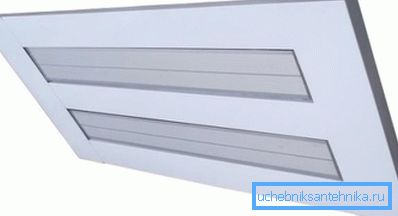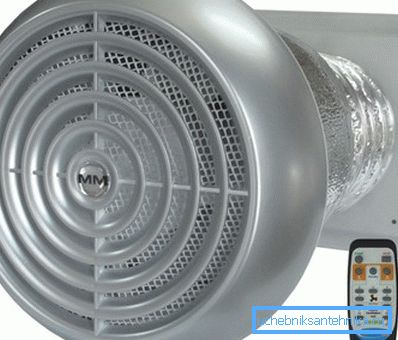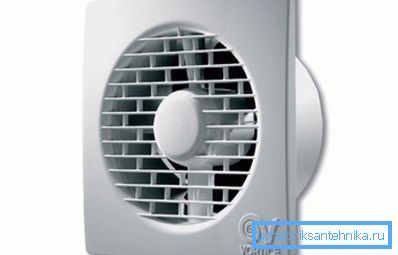Heating + ventilation and air conditioning - a set of
The main condition for a comfortable stay in the house or apartment is a constant flow of fresh air and an acceptable indoor temperature at any time of the year. To do this, in modern housing establish special heating systems, ventilation and air conditioning (JUICE). In this article we will take a closer look at their types, device and features.

General information
The elements of heating, ventilation and air conditioning in modern homes represent a unified system of climate control. Moreover, the equipment is characterized by performance, reliability and efficiency.
As already mentioned above, the comfort of living and even the health of residents depend on how favorable the microclimate in a home is. Therefore, even if the house itself complies with all building and sanitary standards, an improperly organized system of microclimate control can erase all its merits.
It follows that the maintenance of optimal environmental conditions must be approached no less responsibly than the construction and decoration of the building.

Living environment microclimate
The term “microclimate” means several parameters at once, and they are normalized by various documents, such as GOSTs, SanPiNs, SNiPs, etc. Well, the maintenance of these norms is imposed on special equipment.
Below are the main parameters of the microclimate and their norms:
| Air temperature | Should be in the range of 20-22 degrees Celsius. It is this temperature that is considered the most comfortable for human life (rest and work). The equipment for heating (in winter), ventilation and air conditioning (in summer) is responsible for maintaining the optimum temperature conditions. |
| Air humidity | The range of this parameter is 40-60 percent. It is maintained by humidifiers and forced ventilation systems. Adjustment is carried out by electronics, all sorts of sensors and other devices. |
| Chemical composition of air | The human body is extremely sensitive to the chemical composition of air. Car exhaust and industrial emissions can cause serious illness. Therefore, before you get into the room, the air flows are cleaned in special filters. |
| Uniform heat distribution | To make the room comfortable, warm air flows must be evenly distributed throughout the space. The same goes for air conditioning. |
Note! All of the above parameters should be permanent. This is the only way to ensure a comfortable stay in the room.
Since most of the microclimate parameters are regulated simultaneously by several systems, they must work in a coordinated and coherent manner based on sensor readings. The equipment can be switched on both simultaneously and sequentially.
Below we take a closer look at the equipment that is responsible for all these parameters.

Equipment ventilation heating and microclimate
Heating systems
The instruction to modern equipment for microclimate control requires special equipment that provides heating of indoor air. To date, use a variety of systems that are able to compensate for ventilation and transmission heat loss through windows, doors, walls, etc.
In particular, the following devices are widely used:
- Devices emitting thermal energy. These include various infrared heaters:
- fireplaces;
- lamps;
- stoves;
- radiators, etc.

Regardless of the type, all heating devices that are included in the overall JUICE must be efficient and economical. As a rule, this technique works automatically, receiving information from sensors located in the premises of an apartment or house.

Ventilation
Ventilation systems include many units that are designed to ensure effective air circulation in the building.
According to the SNiP on heating, ventilation and air conditioning, they can be classified according to the following features:
- The way to create pressure in the system, due to which the movement of air masses. May be natural or forced.
- Purposes of forced ventilation system - can be inlet, exhaust or mixed.
- Scope - there are common, which provide ventilation throughout the room, and local, which remove polluted air directly from the place of release. The second is the kitchen hood, installed above the stove.
- The design of the ventilation system - can be combined into a single network using air ducts or to be a point, without air ducts.
It should be noted that in modern housing natural ventilation systems are used extremely rarely, since as a result of the high tightness of the rooms they need more intensive air exchange. The fact is that the principle of operation of such ventilation is based on the difference in pressure and temperature inside and outside the building.

Since this parameter is unstable, the efficiency of the natural system can also increase and decrease. This is especially critical if there is no air flow through the cracks in the windows, doors, etc.
The simplest and most affordable way to organize forced ventilation, which is more efficient, is the use of fans. You can even install them yourself, for example, if there is not enough natural ventilation in the room.
As mentioned above, the compulsory system can be inlet, exhaust or intake-exhaust. In the first case, the fan is installed in the supply channel and sucks air into the room from the street. As a rule, the intake fans are equipped with a device for heating the incoming air, which minimizes heat losses in winter.
It should be noted that such systems are quite rare. Exhaust ventilation is much more popular when the fan is installed in the exhaust duct or in front of the exhaust vent.

Note! Any ventilation system before installation must be designed according to GOST for heating, ventilation and air conditioning. Moreover, this work should be done by specialists, since the drafting of the project involves the calculation of a number of important parameters.
A more complex and sophisticated version of the organization of forced air exchange is the use of aggregate installations that are mounted on the roof or in air ducts and provide forced-air ventilation. Such devices in addition to fans have filters for air purification.
Installations, as a rule, work in automatic mode. Their greatest advantage is the presence of a recovery heat exchanger, which heats the incoming streams due to the heat of the heated exhaust air. This system allows to significantly reduce energy consumption in winter.

In addition, all kinds of valves and distribution systems are widely used, which also allow to increase the intensity of air exchange.
Note! According to the SNiP on heating and ventilation and air conditioning (2.04.05-91 * Y), when installing equipment, technical solutions should be provided to ensure normalized levels of vibration and noise from the equipment used.

Conditioning
Air conditioning systems not only cool the air, but also regulate its humidity and flow rate. Thus, their function is in many respects similar to the functions of ventilation systems.
It should be noted that modern air conditioners operate in automatic mode, tracking the basic parameters of the ambient air with the help of sensors, thus they provide comfortable conditions for a person to live without outside intervention. The only thing, when you turn on such devices, you must specify a specific mode of operation.

All existing ventilation systems can be divided into several types:
- Household and industrial - if with the first everything is clear (installed in houses and apartments), then production rooms are designed to cool the space in the sales rooms and production shops. They are more powerful and productive.
- Local and centralized - the first are designed to cool a limited space, while the second cools the air in the entire building (apartment or house).
- Stationary and mobile - the first are reliably mounted on a permanent place, the second can be transferred from room to room.
- Recirculation, which carry out air intake from the room, and direct-flow, sucking the air from the street.

The choice of equipment for air conditioning is carried out individually, depending on the tasks assigned to him and the conditions in the room.
The most popular in JUICE are the following devices:
- Split systems - today are the most common type of air conditioners. Since they are presented in a wide range, you can easily pick up the device, both for residential premises and industrial facilities. Split systems are devices consisting of two units - compressor-condenser (external) and evaporative (internal). It should be noted that wall split-conditioners are the most popular.
- Windowed - they are compact and installed in window openings.
- Outdoor - differ in that they can be installed in any corner of the room.
- Ducts - are part of the ventilation system. Often, such devices are installed in the ventilation systems.

- Central air conditioners and fan coil systems - the cost of these devices is quite high, so they are often used in public places where movement and cooling of large volumes of air masses are required.
- Cassette - are mounted in rooms with suspended ceilings.
Note! The price of household air conditioners largely depends on their functionality. For example, more expensive systems can be equipped with an air ionizer, as well as other useful functions.
Here, perhaps, are all the main elements included in the JUICE, which are responsible for creating a favorable microclimate for human health and vital activity.
Conclusion
Heating, ventilation and air conditioning systems are an integral part of a modern home, without which it is impossible to provide comfortable living conditions. All of them are designed individually, depending on the characteristics of the house and the environment. Therefore, the selection of equipment must be carried out by specialists.
From the video in this article, you can learn some additional information on this topic.